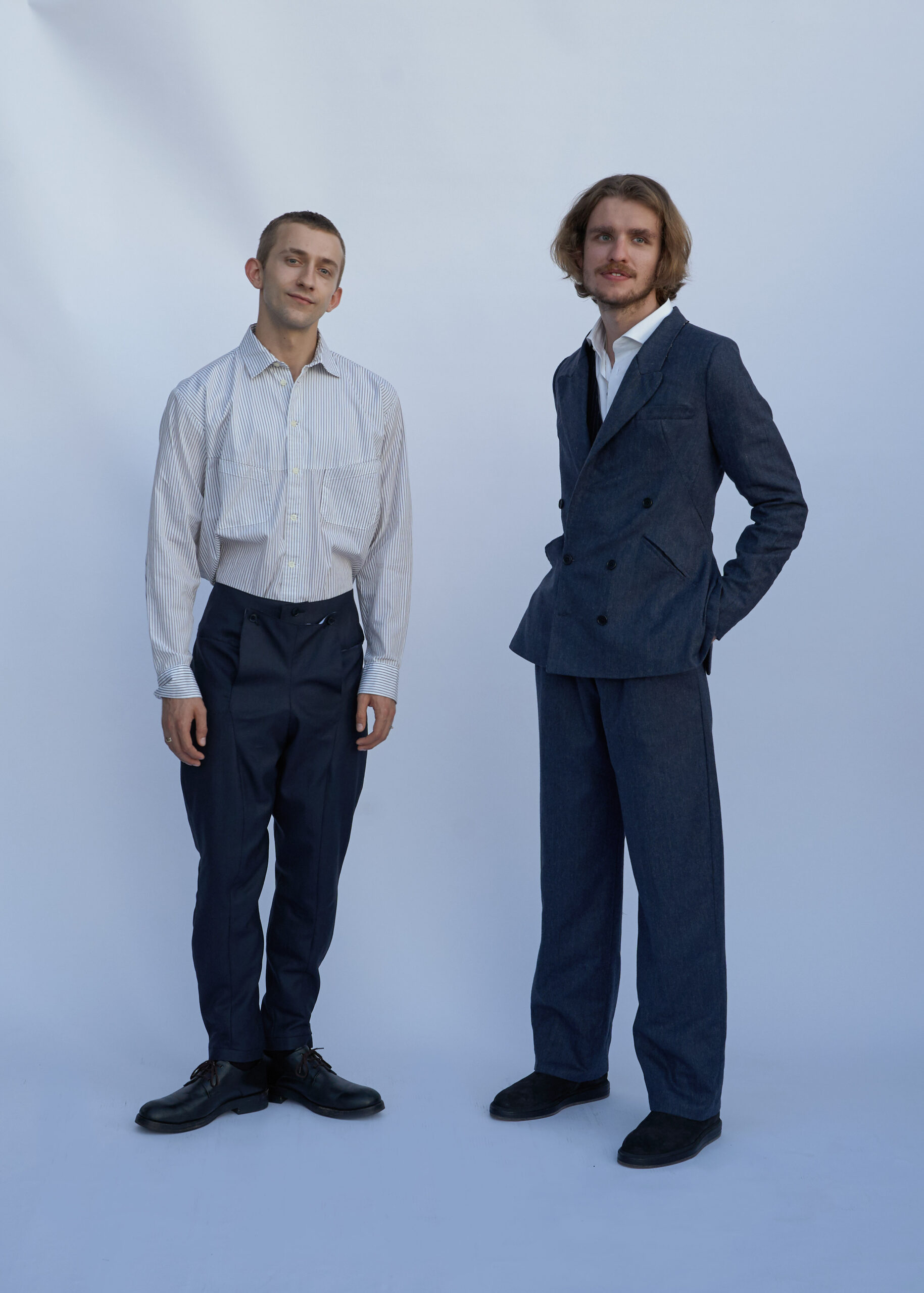Suiting the Body

Suiting the Body proposes an alternative approach to traditional
tailoring. The men’s suit has symbolic meanings which seem contradictory. It
was designed in accordance with Enlightenment ideals of rationality which
denounce physicality. Meanwhile, it was modelled after an ideal male body in Greek
sculpture. The rejection of the physical and striving for a ‘life of the mind’
is countered by a very erotic emphasis on the body underneath.
The suit emphasizes anatomy by showing a singular interpretation of a man’s body. The majority of our clothing is based on metric patterns: two-dimensional abstractions of the breathing body. Although tailored suits are made specifically for individuals, their bodies are still translated into garments within a pre-defined system. This causes us to perceive bodies in a fixed way.
This series uses a different method: by casting a body, the form can be unfolded and laid flat like an orange peel. Garments created from this emphasize shapes which traditional suits smooth out: protruding shoulder blades, bulging crotches and clearcut calves.
The suit emphasizes anatomy by showing a singular interpretation of a man’s body. The majority of our clothing is based on metric patterns: two-dimensional abstractions of the breathing body. Although tailored suits are made specifically for individuals, their bodies are still translated into garments within a pre-defined system. This causes us to perceive bodies in a fixed way.
This series uses a different method: by casting a body, the form can be unfolded and laid flat like an orange peel. Garments created from this emphasize shapes which traditional suits smooth out: protruding shoulder blades, bulging crotches and clearcut calves.

